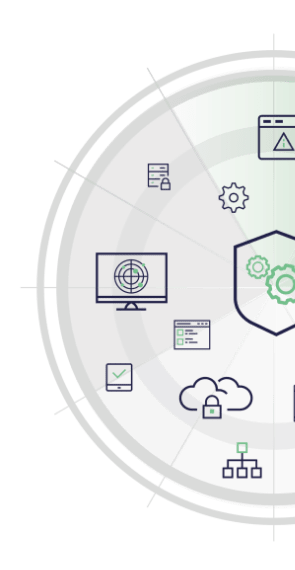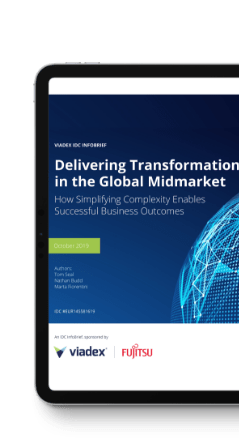LEASE IS MORE – Financing your digital transformation
by
Gerhard Malan, CFO, Viadex

The availability of cash, the type of asset and its useful life,
and the flexibility inherent in a leasing arrangement
all take precedent for me when balancing the pros and cons.
In the financial arena, flexibility is agility
The notion of leasing any type of hardware has both its exponents and its detractors, in just about equal numbers. Different organisations run their finances differently, and what’s right for one isn’t necessarily the best option for another.
Every asset, business and situation is unique; every CFO has to balance a mix of variable factors and even once a decision is made it can’t be considered a basis for ongoing decisions on the same topic.
Accounting standards such as the International Financial Reporting Standard (see IFRS 16: Leases) play a part in such decisions. My approach, however, has never been to hold them up as the principle arbiters of which way to go. The availability of cash, the type of asset and its useful life, and the flexibility inherent in a leasing arrangement all take precedent for me when balancing the pros and cons.
Considering IFRS 16 Leases
If your company does comply to IFRS then you’re no doubt aware that the new IFRS 16 on Leases will be effective on 1 January 2019. It heralds some complexities, given that companies are likely to have difficulty keeping financial obligations off the Statement of Financial Position (Balance Sheet) from 2019 going forward. This is because the main purpose of the standard is to eliminate off-balance sheet financing. The standard introduces a new definition of a lease as well as guidance to determine whether your contract is a lease contract or a service contract.
A quick look at IFRS16:
- You need to assess whether the contract contains a lease as defined in IFRS 16.
- Requirements of a lease:
- Can the asset be identified?
- Can you precisely define the asset’s use?
- Can you gain the economic benefit from the use of the asset?
- Can the supplier of the asset substitute the asset during the period of use?
- If it ticks all the above boxes, then your contract probably contains a lease
- If your lease includes payments for services (maintenance, repairs etc.) then the service portion can be split and expensed separately
- There are two exceptions, which give you the right not to classify the contract as a lease:
- The lease is less than 12 months
- The lease is for an asset of a low value (applied on a one-by-one basis)
New challenges are on the way
Regardless of what we all don’t know what a post-Brexit world might look like we do know one thing for certain; new challenges are coming and they’ll probably dictate some pretty adroit decision making. Companies will be forced to deal with the unexpected. As the Chinese proverb goes “Be aware of the danger, but recognise the opportunity.”
There’s nothing quite as handy as cash to have around when an opportunity arises. There’s nothing quite as essential, if the business finds itself in uncertain territory.
Workable contingency planning depends on available funding
When contemplating whether or not I should buy an asset I always consider if it makes sound sense for my cash to be invested in (some might say ‘tied up in’) this asset. I look at whether I can lease it and deploy the cash much smarter. Can the funds be used to grow market share and fund growth, for example? Part of this decision process is based on the need to have cash available for the unknown.
IT equipment, and how to acquire and fund it, is a concern for all businesses. Having the latest technology at your fingertips is essential for any operation. As companies turn to the cloud, the requirement for equipment changes, and the expenditure burden diminishes. There remains, however, a need for on-premise equipment at the datacentre, at the branch and, for geo-dispersed organisations, at all locations forming part of the global entity.
The procurement process of any big capital outlay when acquiring IT equipment can be a daunting, multi-stage task involving:
- Budget approval and guidelines
- RFQs sent out
- Quotes received and reviewed
- Over or under budget reviewed and approval needed
- Return on investment / capital outlay calculated
- Selecting the correct partner; if the partner is new to the business then the on-boarding process is needed
- Numerous consulting sessions with the IT team and manufacturer
- Final approval and deployment
Then comes the gestation period…
It’s not uncommon for a business to discover, after deployment, that utilisation is not close to the maximum and this might only happen in year two or even year three. This sort of situation introduces uncertainty to the business. It possibly incurs further costs not originally budgeted for. It will also negatively impact your return on capital employed. It gets complicated; for example, is the wastage ever measured and reported on?
************
A lease brings release
The business can release itself from all such burdens, frustrations, and complications by taking the lease option. This option alleviates the pressure and flows out the expenditure. It puts the business back in control of its cash, and in a position to respond to unforeseen issues. A lease, in all these regards, is like a financial version of the cloud, reducing risk and supporting financial agility:
- No need to allocate your cash reserves to a depreciating asset
- Being able to refresh the equipment on a frequent basis
- Adding or removing hardware / capacity as needed
- Having foresight of cash flow and expenses
Fundamental pillars of driving the competitive advantage
Hardware as a Service (HaaS) is similar to leasing. This is an approach that can help you reduce risks and safeguard cash by removing the need for funding /big capital outlay. You also gain the ability to introduce new equipment quickly and discontinue equipment that no longer suits the changing shape of your business.
Once again it’s an approach, just like leasing, that gives a degree of flexibility and agility to your business; fundamental pillars of driving the competitive advantage by being able to adapt to new markets and new opportunities. This adaptability comes from having the type of contracts in place that permit fast ramp up as well as a relatively quick escape route should one ever become necessary…contingency planning at its optimum.
Viadex Consulting and Professional Services can help you make the right decisions and enter into the best configuration of agreements for your business as it stands at this moment in time, as you see it developing and for any eventuality that may come your way.
We can advise not only on how to finance your essential digital transformation, but also the best way to go about improving efficiencies in your datacentre/s, for your end users and across your global network.
Get in touch at any time if you’d like to discuss any of the points I’ve touched on in this blog: gerhard.malan@viadex.com





